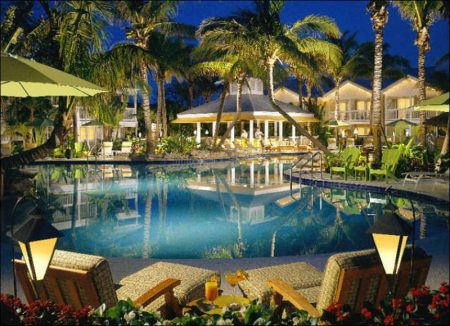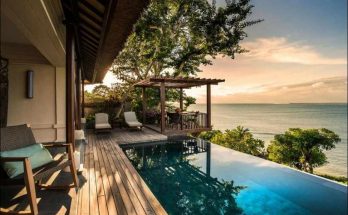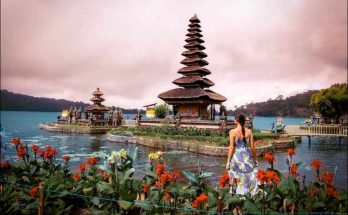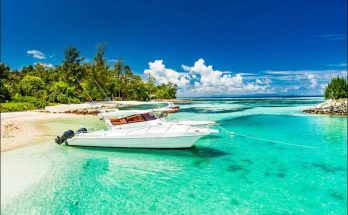Florida (the Everglades State) is completely different from any other state. Although an agriculturel state by geography, inclination and climate, it has been developed and promoted primarily as a resort area. The entire state is flat, with only a very few hills in the interior. The shorelines are sandy, wth miles of fine white bathing beaches. South-central Florida is swampy. The average January temperature is 57 F. in Jacksonville in the north and 70 F. in Key West in the south. Summer temperatures are fairly high all over Florida, averaging about 82 F. Rainfall is heavy, particularly during the late summer and early fall.
The state’s leading business activity is tourism. There is some production of lumber, cigars, minerals and paper. Agricultural crops of importance include fruits, vegetables, sugar and cotton; cattle raising is gaining in importance.
The largest cities are Miami, Jacksonville, Tampa, St. Petersburg, Orlando, Pensacola, Tallahassee, and Panama City. Resort towns are Boca Grande, Boca Raton, Bradenton, Clearwater, Cocoa, Coral Gables, Dania, Daytona Beach, De Land, Delray Beach, Fernandina Beach, Fort Lauderdale, Fort Myers, Hollywood, Jacksonville Beach, Key West, Lakeland, Lake Wales, Lake Worth, Miami Beach, Naples, New Smyrna Beach, Ocala, Orlando, Ormond Beach, Palm Beach, Pass-A-Grille Beach, Pompano Beach, St. Augustine, Sanibel Island, Sarasota, Tampa, Venice, Vero Beach, West Palm Beach and Winter Park. Florida is known for its hunting and fishing.
Along the entire coast and the Keys there are opportunities for deep-sea fishing, and for fresh-water fishing at Lakes Okeechobee, Harris and Apopka. Other good sporting areas are Avon Park, Clermont, Crystal River, Dunnellon, Fort Pierce, Lake City, Punta Gorda, Sebring, Stuart and Winter Haven. There are many large, natural, crystal-clear springs in the state, the best known being Rainbow, Silver, Bonita, De Funiak, De Leon, Green Cove, White, Weeki Wachee, Wakulla, Tarpon and Homasassa Springs.
Views: 152



